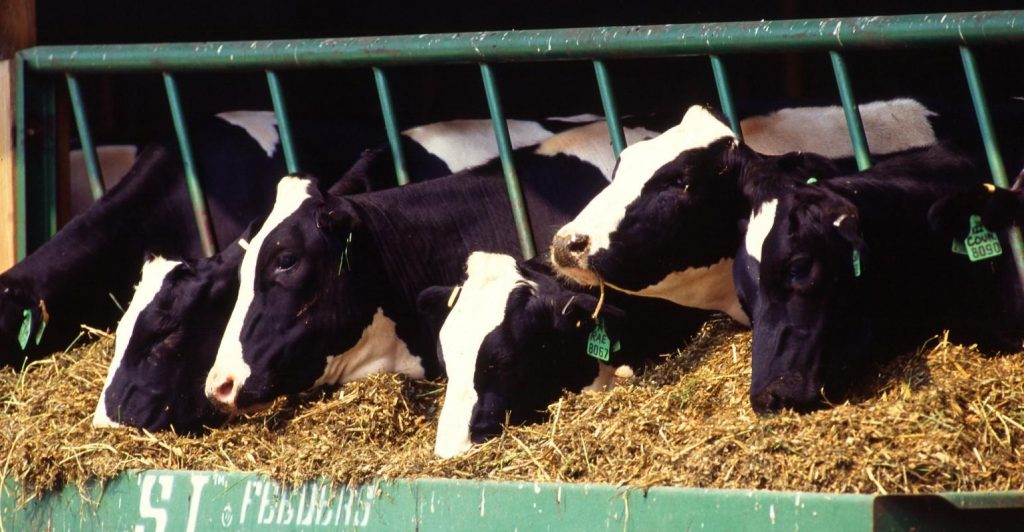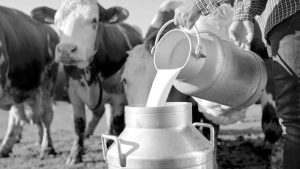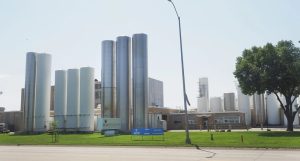
Between 2003 and 2020 there has been a 55% decrease in the number of dairy farms operating nationwide. Dairy farmers are facing rising costs of production and current dairy prices aren’t covering them. Congress is trying to determine the level of government invention needed to prevent a further exodus of dairy farmers.
“We are in the midst of a modern-day dairy crisis,” shares Sen. Kirsten Gillibrand, D-N.Y. in opening up a Senate Agriculture Committee hearing Sept. 15 on the volatile milk price and federal milk marketing system.
Gillibrand and others detailed how the dairy industry’s struggles have been magnified by the fundamental change made to the Class I pricing formula in the 2018 Farm Bill, which switched from using the “higher of” Class III and Class IV to the “average of” the two plus 74 cents and applicable differential.
The 74-cent addition was based on the historic price difference between the two classes, but the historically calculated formula has failed to meet the needs of the present-day market, explains Gillibrand and echoed by producer testimony offered during the hearing.
Any time the price differential between Class III and IV is larger than $1.48, farmers are losing money. During the pandemic, government intervention through high cheese purchases for the food box program left the price differential magnitudes larger than that. Class III prices skyrocketed while Class IV prices increased only slightly, so using the average of the two meant the pricing never fully captured the change in the market. It left Class I prices as much as $4.57/cwt lower under the new formula than the old.
FMMO needs revisited
Christina Zuiderveen, managing partner of Black Soil Dairy, LLC, of Granville, Iowa, explains most milk in the United States is produced in areas regulated through Federal Milk Marketing Orders. This system was put in place decades ago to prevent dairy processors from making one dairy farmer bid against the other.
“In other words, FMMOs promise dairy producers that if their milk is as good as their neighbor’s, they will be paid the same price,” Zuiderveen testifies. “But, after decades of decline in sales of fluid milk, that promise now seems to be broken. Although these conditions benefited me personally last year, I am advocating for change because I want a fair system where everyone can compete on a level playing field.”
FMMO’s in multiple component orders pay farms based on component value plus a value termed the Producer Price Differential or PPD that reflects the pool revenue in excess of components valued using wholesale prices. In 2020, record low negative PPDs caused consternation and frustration among dairy farmers.
In 2020, Zuiderveen benefited from the high cheese prices boosted by an influx in cheese demand while fluid milk sales plummeted. However, her neighbors were sometimes paid far less for their milk because they were not paid solely on that cheese price.
“Good intentions to create a system with uniform prices has resulted in a distorted system that is now coming unglued, to the detriment of dairy families whose income depends – at least in part – on the value of a blend of fluid milk, milk powder and butter,” she says.
Jim Davenport Jr., owner of Tollgate Farm and member of Hudson Valley Fresh, says producers have seen the prices of cheese, butter and powder be impacted by the world market and futures, and less reliable to how it was once driven by the more stable fluid milk market.
The pandemic “has created an even greater urgency to revisit orders,” says Catherine H. de Ronde, vice president for economic and legislative affairs for Agri-Mark, based in Middlebury, VT, in her testimony. “Negative PPDs had milk checks looking incredibly bizarre, de-pooling at a level never-before seen became a new phenomenon for many. The change to the underlying Class I mover was a key catalyst of these outcomes.”
Christopher Wolf, Cornell University agricultural economist, notes that the PPDs were not just abnormal in magnitude, they were unpredictable and greatly contributed to farm milk price volatility. Recent research shows that the large declines in PPDs were driven by a whole host of factors including: trends in utilization driven by consumption changes, trends in milk component production, the change in the Class I skim milk pricing mover from the higher of Class III and IV to the average, and depooling of milk by Class III processors.
Possible solutions
“Many solutions have been discussed by the dairy industry including reverting to the old, higher of rule, as well as snubbing the difference to avoid effects of large price divergences. This is one potential pricing change that would almost universally help farm milk prices,” Wolf testifies.
Mike Ferguson, owner of Ferguson Dairy Farm, of Senatobia, Miss., says Congress should consider immediately going back to the “higher of” formula until the dairy industry can proceed to a national rulemaking process to consider alternative Class I milk pricing rules. He also suggests a frequent and thorough review of the national adjusting factor in the Class I mover calculation.
She notes milk pricing formulas currently prioritize fluid milk, which does not reflect the fundamental shift in market share to an export-driven market. For decades, fluid consumption has continually decreased.
“This decline coupled with depooling does not leave enough milk in the pool to provide premiums. In fact, dairy producers have frequently seen deductions on their milk check in the last year. Updating the order design to provide consistent benefits to all manufacturers would over time lead to a shift in plant capacity and product mix towards more value-added processing, which would reduce the disparities between our pay price and those of our disadvantaged competitors,” she suggests.
In addition, changing the timing of the Class I pricing calculation to be nearer to the other classes of milk could reduce the incentives for manufacturers to de-pool.
She also notes the FMMO system should be modernized to stimulate financial transparency and promote competition and innovation as opposed to consolidation among both processors and producers.
“Making milk checks more transparent would benefit dairy producers in two ways. Dairyman would better understand their earnings and might be able to make changes to farm management practices or co-op policies to avoid future deductions. Promoting competition between processors will give dairy families a better milk price and incentivize the development of new products and markets,” she adds.
“The wide variance in mailbox prices caused by current pricing formulas creates a sense of helplessness among producers. While competition is good, it is unfortunate that federal policies create an uneven playing field. When some producers receive as much as $9 less for their milk than their peers, even the best operator would not be able to compete in the long run,” she says.
























